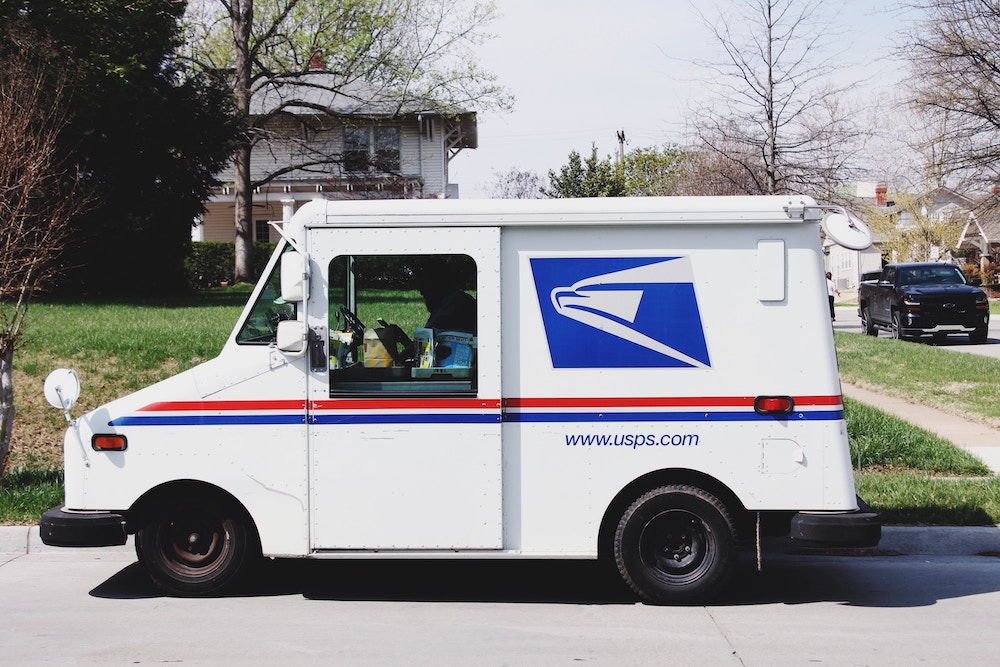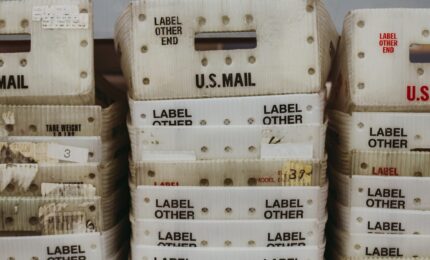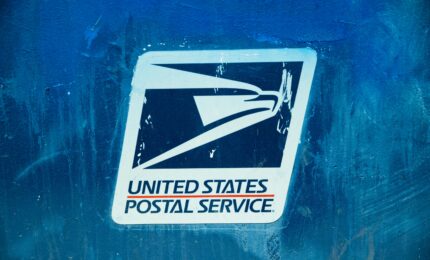Ultimate Guide: USPS Tabbing Requirements for Self Mailers
By Ashley Jorgensen | October 15, 2024

Got questions about self-mailer tabs? We have answers!
Staying up to date with the USPS’s regulations for folded self-mailers is tricky. We put together a handy guide that breaks down all the specifics for tabbing requirements and shows what is acceptable for the mail stream.
Let’s get started!
Basic Self-Mailer Dimensions
Here, we’ll walk you through some self-mailer basics and then get into the nitty-gritty of USPS regulations for tabbing.
A self-mailer is created with two or more panels, using one or more unbound sheets of paper that are folded together and sealed to make a letter-sized mailpiece.
Now let’s break down the basic attributes of a self-mailer.
Height
Minimum of 3.5 inches and a maximum of 6 inches.
Length
Minimum of 5 inches and a maximum of 10.5 inches.
Thickness
Minimum of .007 inch and a maximum of .25 inch. Note: A minimum of .009 inch is okay if the height goes over 4-1/4 inches or if the length is greater than 6 inches.
Maximum weight
3 ounces.
Self-Mailer Panels
Every self-mailer is made up of panels (the sections created when a sheet of paper is folded). To get the total number of panels, count each two-sided section created by the folds to get one panel. Don’t forget to include the front and back.
You can have a maximum of 12 panels, but there are exceptions (see section 3.14.3 of the Postal Explorer.)
The outside panels produced by the fold must be equal or almost equal in size.
The non-address side or back of the mailer is the last folded panel of the mail piece. The back panel’s open edge must be at the top or within 1 inch of the top or around the edge of the mail piece.
The last folded edge must be positioned at the bottom of the self-mailer unless it is an oblong piece. Oblong pieces are covered below.
Self-Mailer Flaps
Some self-mailers have flaps, which are created when the last panel is folded over and attached to the unaddressed side of the piece. Below are some basic standards and requirements for flaps:
The flap must be at least 1-1/2 inches when measured from the top of the mail piece.
The flap’s folded edge must be in line with the top of the mail piece and finish 1 inch or more above the bottom edge. However, there are exceptions (see section 3.14. of the Postal Explorer).
All flaps must be secured by tabs or glue spots/lines.
Die-cut shapes should be secured with tabs or glue spots/lines.
Below are the USPS tabbing requirements and general sealing standards for self-mailers.
Basic Folded Self-Mailers (Bi-Fold/Tri-Fold)
These are the USPS tabbing requirements and general sealing standards for self-mailers:
Bi-Fold: Folded once making up 2 panels.
Tri-Fold: Folded twice making up 3 panels.
When using tabs on basic folded self-mailers (FSMs), the following applies:
Mailing pieces up to 1 ounce require two tabs at 1-inch diameter.
Mailing pieces over 1 ounce require two tabs at 1- 1-1/2 inches diameter.
Tabs can be positioned in 2 places. See images below.
Oblong Folded Self-Mailers (Basic oblong)
The paper is folded once and forms 2 rectangular panels with 1 elongated area and parallel opposite sides.
When using tabs on oblong folded self-mailers, the following applies:
Mailing pieces up to 1 ounce require two tabs at 1-inch diameter
Mailing pieces over 1 ounce require two tabs at 1-1/2 inch diameter.
The final folded edge must be the leading right edge.
Quarter Fold Self-Mailer (Basic quarter fold and newsprint)
The paper is folded twice with each fold at a right angle to the previous fold. This is one sheet of paper quarter-folded to create four panels. This is also called a right-angle-fold mail piece.
When using tabs on quarter fold self-mailers the following applies:
Mailing pieces up to 1 ounce require two tabs at 1-inch diameter (see figure a)
Mailing pieces over 1 ounce require three tabs at 1-1/2 inch diameter (see figure b)
Newsprint requires three tabs at 1-1/2 inch diameter (see figure c)
General Sealing Requirements
Any folded self-mailer must follow the USPS’s regulations and be sealed with glue or tabs. Below, we break down the USPS tabbing and gluing requirements.
Tabbing Requirements
Tabs can be made of paper, translucent paper, vinyl, or plastic.
The number and size of tabs needed depend on the mail piece’s weight and design.
Bi-fold and tri-fold: Weight up to 3 ounces requires two non-perforated tabs on the top edge of the piece within 1 inch of the edges.
Quarter-fold: Weight up to 3 ounces requires three non-perforated tabs, one on the leading edge and one on the trailing edge within 1 inch of the top edges. The third tab must be on the lower leading edge and 1/2 inch away from the bottom.
Oblong pieces: Weight up to 3 ounces, 1 tab is placed in the center of the top edge and 1 in the center of the trailing edge. OR both tabs may be placed on the trailing edge within 1 inch of the top and bottom edges.
Note: Tabs cannot be put on the bottom of these mail pieces.
Glue
All glue must be positioned within 1/4 inch of the open edges and opposite the final fold, or on the leading and trailing edges when the final fold is on the bottom. Glue can be applied in five ways, but only one way is necessary.
A continuous line that’s at least 1/8 inch wide.
3-4 spots of glue that are at least 3/8 inch in diameter (based on design and weight).
Three to four elongated lines of glue, measuring 1/8 inch by 1/2 inch, 1/4 inch by 1/2 inch, or 1/8 inch by 1 inch (based on design and weight).
Both glue spots and elongated glue lines can be placed evenly along sealed edges.
Quarter-fold mailers must be sealed with tabs.
Reading through these USPS tabbing requirements for self mailers can certainly make your head spin. We get it! If you have any questions, please contact us. One of our direct mail experts will be glad to help you with your project and make sure your mail pieces follow the rules. We are always here to help you!


